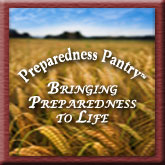IT’S OFFICIAL!! It is now Hell-hot!! The official temp was over 100 F yesterday, hailing the beginning of season. Fortunately, it is the shortest of the desert seasons here – usually lasting between a month and six weeks. During this time, we have the benefits of drying vegetation, thirsty birds and animals, and our favorite– full-on fire season! We’ve had a few small fires in the area lately. A few ranges away there is one that has been going for 10 days or so and may not be ‘out’ until the summer rains start. That’s the Monsoon Season for the uninitiated. The monsoons, climatically a correct nomenclature, are what end the Hell-hot season. The monsoons in the southwestern US are not as voluminous as those on the Indian subcontinent. They may have been in the distant past, but that pesky Central American land bridge reduced the dynamics that lead us to today’s piker of a monsoon, comparatively. Those of us who benefit from these mini- monsoons are unlikely to look this gift horse in the choppers.
The monsoons are like nothing I had experienced before moving here, and I’ve lived in most of the major sub-sections of the US. Other than the incredible beauty of the Keweenaw Peninsula of Michigan, the monsoonal southwestern US is the most spectacularly wonderful place to be in the states. First, we get rain – and a fair amount. More than 50% of our 10 to 30 inches of rain, elevation dependant, is delivered by the monsoons. Second, then temps are moderated to an amazing degree – gone are the triple digit numbers, banished until the following May or June if the season goes per ‘normal.’ Third, the environment comes ALIVE. Flowers bloom, fawns are born, grass grows green, brooks babble – some yell, hence the local stupid motorist laws (more on that below).
The lead-up to the monsoons ( sometimes called ‘dry monsoon’) is not only HOT, but the humidity rises each day, starting at single to low double digits in late May to a dew point of 55 degrees. Nothing quite as pleasant as really hot AND humid -- that's why I left the southeast US! When the dewpoint has been above 55 degrees for 3 consecutive days, the WET Monsoon has begun. WHEW!!
A couple of years ago, there was a move to make the monsoons more ‘out-lander friendly’ and dates, rather than climatic conditions, became the ‘season.’ Can you believed that the ‘powers-that-be’ even dumbed-down the monsoon?? Despite the actual conditions usually hailing the season around the 4th of July, the ‘official’ season is 15 June to 15 September. Got that, Mother Nature???
OK -- Stupid motorists, you ask? Yes, there were enough stupid people who drove their cars into furiously rushing water occupying normally dry creek beds that the cost of extricating them (if still alive) became a burden on the state. Hence if you enter a flash-flooded creek and do not become a brief entry in the annual Darwin Awards, you pay a steep fine if emergency services personnel must rescue your stupid self. I love both the concept and the common name – call stupid motorists what they are: STUPID!
This is actually a serious subject. Many roads in the southwestern US (SWUS) cross normally dry creeks, called ‘dry washes’ or ‘arroyos’ depending on the region. Despite signs warning people not to enter when flooded, lots of people, usually new to the SWUS , know better and try to cross them. It only takes about 6" of swift water for your tires to lose traction, especially if the road is paved. After that, you and your car are officially FLOTSAM. If you are fortunate, you survive. Many people every year actually DIE doing this, which is especially stupid when you consider that if they wait ONE HOUR, the water will probably be gone. Now who has to be somewhere so badly that it is worth the risk of DEATH to wait an hour? NOW you understand the stupid motorist law!
So, get your tires checked, put a couple of gallons of water and some snacks in the car, and get ready for the heat and the rain!












